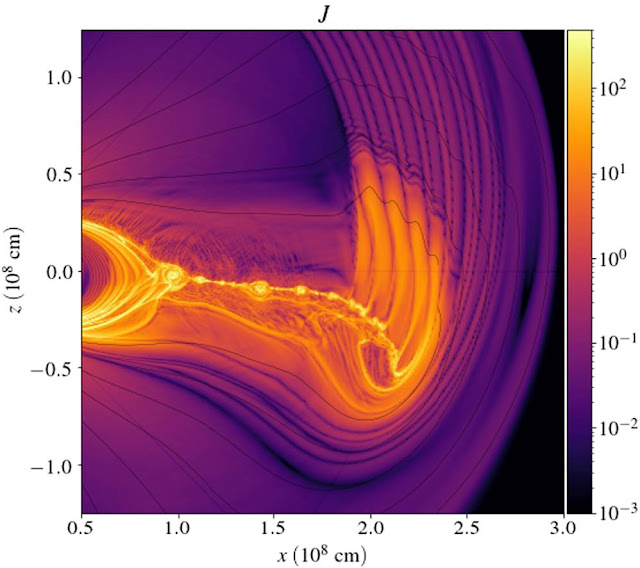A zoom-in of ejecta propagating through the magnetosphere surrounding a magnetized neutron star. [Adapted from Yuan et al. 2020]
The simulation frame above spans roughly 15 x 108 cm by 30 x 108 cm. It provides a large-scale view of the magnetar and its magnetosphere 50 milliseconds into the authors’ simulation, as the ejected plasmoid blobs reach the outer regions of the magnetosphere. The image to the right is from just 10 milliseconds into the simulation, showing a detailed view of the ejecta early on. Both images are adapted from the original figures; to see the originals and to learn more about the authors’ results, check out the original article below.
Citation
“Plasmoid Ejection by Alfvén Waves and the Fast Radio Bursts from SGR 1935+2154,” Yajie Yuan et al 2020 ApJL 900 L21. doi:10.3847/2041-8213/abafa8
Source: American Astronomical Society (AAS) NOVA

